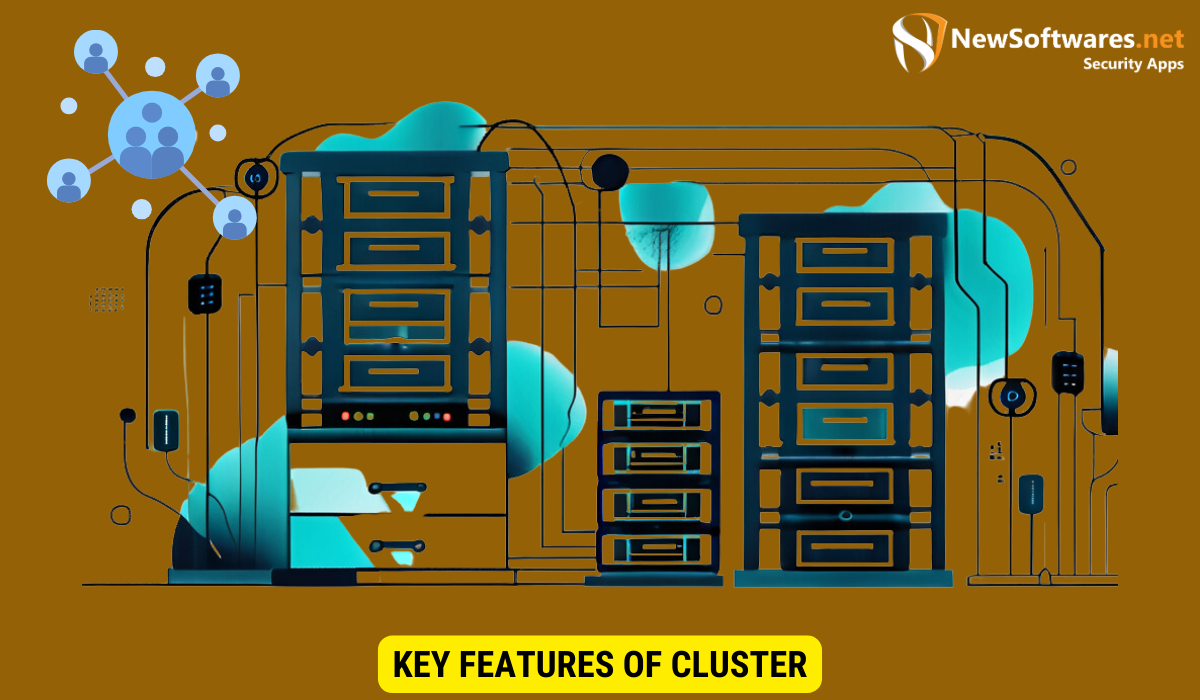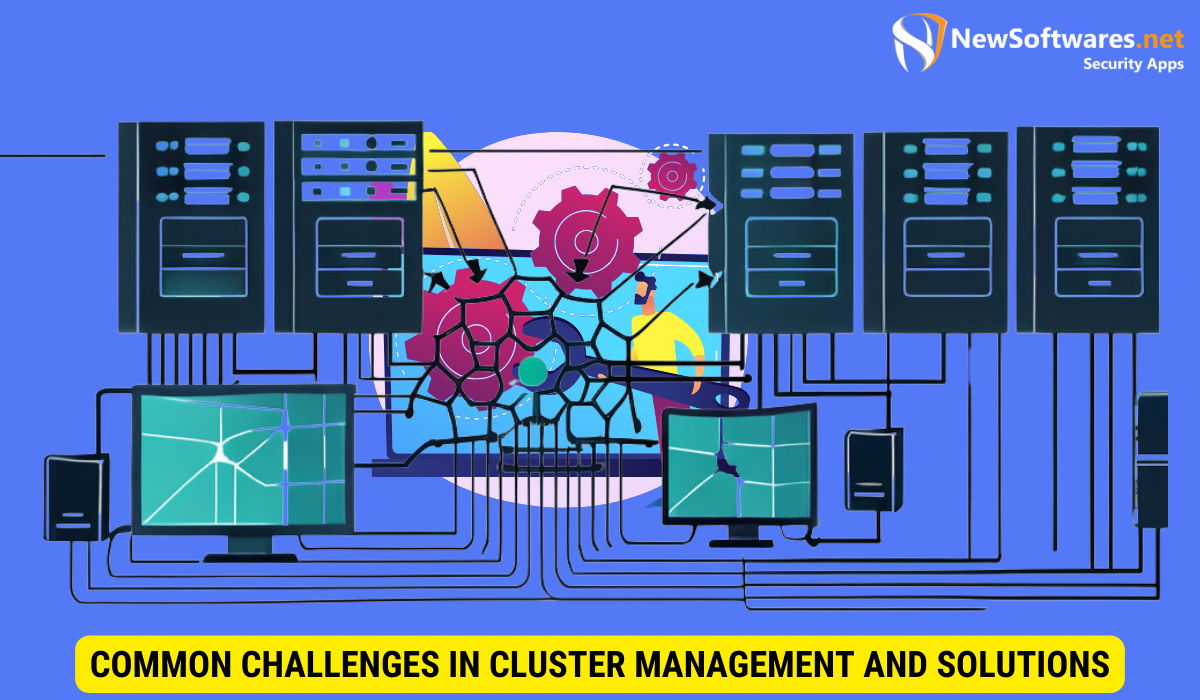CLUSTER, a group of interconnected servers, enhances scalability, availability, and reliability in data management. Implementing CLUSTER involves planning, setup, and maintenance, ensuring efficient data processing and storage.
In the world of data management, the concept of CLUSTER is crucial for efficient operations. But, what exactly is CLUSTER? How does it contribute to data management? And, how can you implement and manage CLUSTER effectively? I will explore the answers to these questions and provide you with valuable tips and best practices for successful CLUSTER management. So, let’s dive in!
What is CLUSTER in Data Management?
CLUSTER refers to a group of interconnected servers or nodes that work together to store and process data. It is designed to ensure high availability, scalability, and reliability of data management systems. Instead of relying on a single server, CLUSTER distributes the workload among multiple servers, increasing efficiency and reducing the risk of system failure.
The Basic Concept of CLUSTER
At its core, a CLUSTER consists of multiple nodes that communicate with each other through a shared network. These nodes work together as a single system, allowing for seamless data processing and storage. By distributing data across multiple servers, CLUSTER improves performance and allows for easy expansion as your data needs grow.
Importance of CLUSTER in Data Management
CLUSTER is crucial in data management for several reasons. Firstly, it enhances scalability, allowing your system to handle increasing amounts of data without sacrificing performance. Secondly, CLUSTER ensures high availability by distributing data across multiple nodes, minimizing the impact of server failures. Lastly, CLUSTER improves reliability as it provides redundancy, ensuring that data is backed up and accessible in case of any hardware or software issues.
Furthermore, CLUSTER offers advanced data management capabilities that go beyond traditional single-server setups. With CLUSTER, you can implement parallel processing, which allows for faster data analysis and decision-making. This is particularly beneficial for organizations dealing with large datasets or real-time data processing requirements.
In addition, CLUSTER provides fault tolerance, which means that even if one or more nodes in the cluster fail, the system can continue to operate without any interruption. This is achieved through data replication, where data is stored on multiple nodes, ensuring that a copy is always available even if one node goes down.
Another advantage of CLUSTER is its ability to handle increased workloads. As your data management needs grow, you can easily add more nodes to the cluster, expanding its processing power and storage capacity. This scalability ensures that your system can keep up with the demands of your business, without the need for a complete overhaul of your infrastructure.
Moreover, CLUSTER offers improved data security. With data distributed across multiple nodes, the risk of data loss due to hardware failure or cyber-attacks is significantly reduced. Additionally, CLUSTER allows for data encryption and access control mechanisms, ensuring that only authorized users can access sensitive information.
In conclusion, CLUSTER is a powerful solution for data management, providing high availability, scalability, reliability, advanced data processing capabilities, fault tolerance, increased workload handling, and enhanced data security. By leveraging the benefits of CLUSTER, organizations can optimize their data management systems and ensure the efficient handling of their data.
Key Features of CLUSTER

Now that we understand the importance of CLUSTER in data management, let’s explore its key features:
Scalability and Flexibility
CLUSTER allows for easy scalability, enabling you to add or remove nodes as needed. This flexibility ensures that your system can adapt to changing data demands without any disruptions.
Imagine you have a rapidly growing business and your data needs are constantly increasing. With CLUSTER, you can effortlessly expand your infrastructure by adding more nodes to accommodate the growing data volume. This scalability feature gives you the peace of mind that your system can handle any future growth without compromising performance or stability.
High Availability and Reliability
By distributing data across multiple nodes, CLUSTER ensures that your system remains highly available. In the event of a server failure, the workload is automatically shifted to the remaining nodes, minimizing downtime and maintaining data integrity.
Let’s say you are running a critical application that requires uninterrupted access to data. With CLUSTER, you can rest assured that even if one of your servers experiences a hardware failure, your system will seamlessly continue to operate without any disruptions. The data stored across multiple nodes ensures that there is always a backup available, guaranteeing high availability and reliability.
Moreover, CLUSTER employs advanced fault-tolerant mechanisms that constantly monitor the health of each node. If any issues are detected, the system automatically takes corrective actions to ensure the continuous operation of your data infrastructure. This proactive approach to maintaining reliability further enhances the overall robustness of your system.
Steps to Implement CLUSTER in Data Management
Implementing a CLUSTER requires careful planning and configuration. Here are the key steps involved:
Planning and Designing a CLUSTER
Before implementing a CLUSTER, it’s essential to assess your data management needs and goals. Consider factors such as data volume, performance requirements, and future growth. This evaluation will help you determine the most suitable CLUSTER architecture for your organization.
During the planning phase, it’s crucial to involve key stakeholders and subject matter experts to ensure that the CLUSTER design aligns with your objectives. Collaborative discussions and brainstorming sessions can help identify potential challenges and opportunities, leading to a more robust and effective CLUSTER implementation.
Setting Up and Configuring a CLUSTER
Once you have a solid plan in place, it’s time to set up and configure your CLUSTER. This involves installing the necessary software, connecting the nodes through a network, and configuring the system settings.
When setting up the CLUSTER, it’s important to follow the recommended guidelines provided by your CLUSTER solution’s documentation. These guidelines will help you ensure a smooth installation process and avoid any potential pitfalls. Additionally, consider engaging the support of experienced professionals who can provide valuable insights and assistance during the setup and configuration phase.
During the configuration process, you’ll need to define various parameters and settings based on your specific requirements. This includes determining the number of nodes in the CLUSTER, assigning roles to each node, and establishing data replication and synchronization mechanisms. Paying attention to these details will help optimize the performance, reliability, and scalability of your CLUSTER.
Best Practices for Efficient CLUSTER Management
To ensure optimal performance and reliability, follow these best practices for CLUSTER management:
Regular Monitoring and Maintenance
Monitor your CLUSTER regularly to identify any performance issues or potential bottlenecks. Regular maintenance activities such as software updates, hardware upgrades, and database optimizations will help keep your CLUSTER running smoothly.
Ensuring Data Security in CLUSTER
Implement robust security measures to protect your data in the CLUSTER. This includes implementing authentication mechanisms, encryption, access controls, and regular backups. Regularly audit your CLUSTER for potential vulnerabilities and address any security gaps promptly.
Common Challenges in CLUSTER Management and Solutions

While CLUSTER offers numerous benefits, it also poses its own set of challenges. Here are some common challenges you may encounter and their solutions:
Dealing with Data Redundancy
Managing data redundancy can be complex in a CLUSTER environment. To overcome this challenge, implement data deduplication techniques and establish effective data synchronization processes between the nodes.
Overcoming Performance Issues
Inefficient query execution or overloaded nodes can lead to performance issues in a CLUSTER. To address these issues, optimize your queries, distribute the workload evenly across nodes, and consider scaling up your hardware resources if needed.
Key Takeaways
- CLUSTER is a group of interconnected servers that work together to store and process data.
- CLUSTER improves scalability, high availability, and reliability in data management systems.
- Implementing CLUSTER requires careful planning, design, and configuration.
- Regular monitoring, maintenance, and data security measures are essential for efficient CLUSTER management.
- Common challenges in CLUSTER management include data redundancy and performance issues, which can be overcome through effective strategies and optimizations.
FAQs
Q: Can I add or remove nodes from a CLUSTER without impacting my system’s performance?
A: Yes, the flexibility of CLUSTER allows you to add or remove nodes as needed, ensuring minimal impact on performance. However, careful planning and execution are essential to maintain optimal system functionality.
Q: What happens if one of the nodes in my CLUSTER fails?
A: In the event of node failure, the workload is automatically distributed to the remaining nodes, maintaining high availability. Once the failed node is restored, it seamlessly integrates back into the CLUSTER.
Q: How frequently should I monitor my CLUSTER?
A: It is recommended to monitor your CLUSTER regularly, at least on a weekly basis. This ensures timely detection of any issues and allows for proactive maintenance to keep your system running smoothly.
Q: Does CLUSTER provide built-in data backup and recovery mechanisms?
A: CLUSTER itself does not provide built-in backup and recovery mechanisms. However, it is essential to implement regular data backups and establish effective recovery processes to ensure the safety and integrity of your data.
Q: Can I implement CLUSTER in both on-premises and cloud-based environments?
A: Yes, CLUSTER can be implemented in both on-premises and cloud-based environments. The approach may vary depending on the specific requirements and resources available in each environment.
Conclusion
Understanding CLUSTER is crucial for efficient data management. By implementing and managing CLUSTER effectively, you can ensure high availability, scalability, and reliability of your data management systems. Follow the key steps, best practices, and solutions outlined in this article to unlock the full potential of CLUSTER in your organization. Harness the power of CLUSTER for efficient data management and stay ahead in the ever-evolving world of technology.
